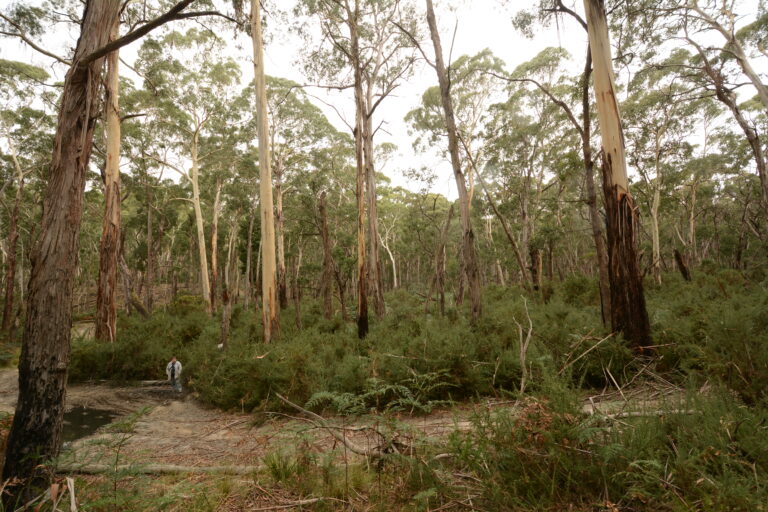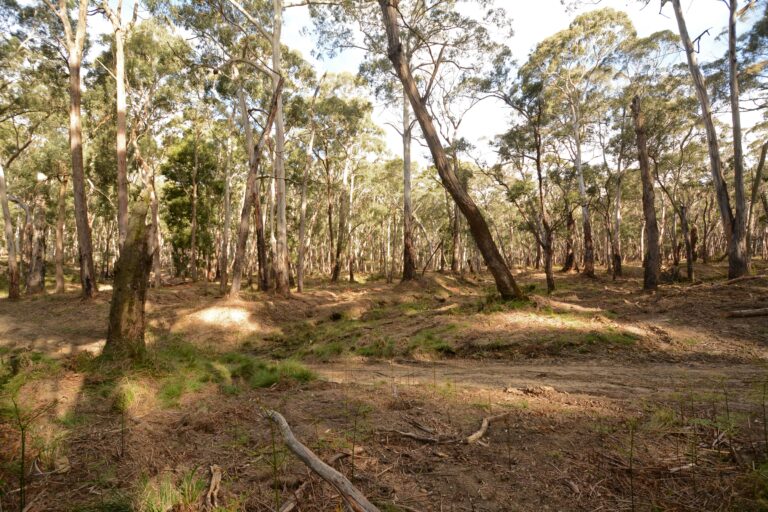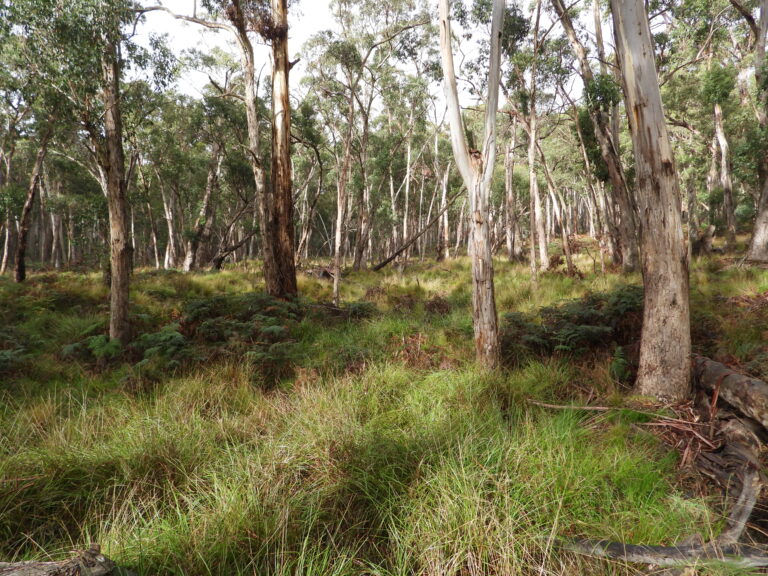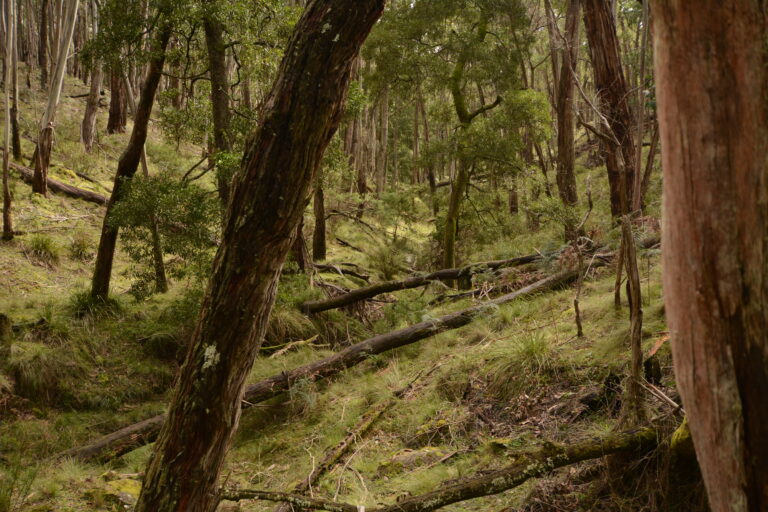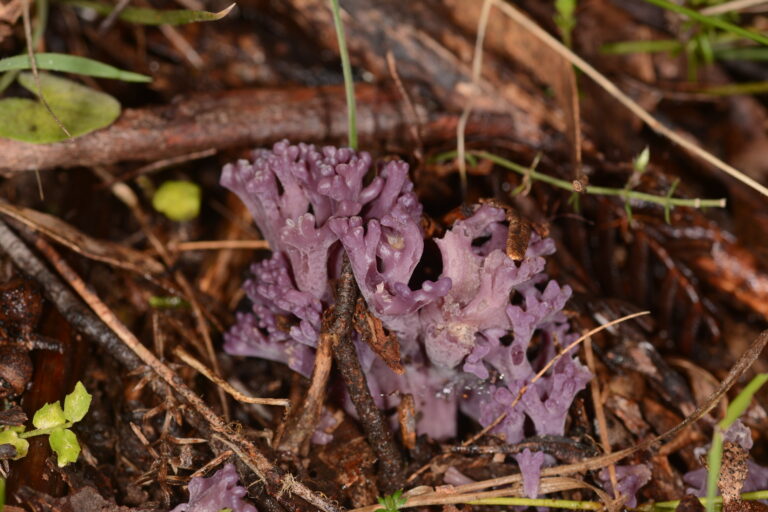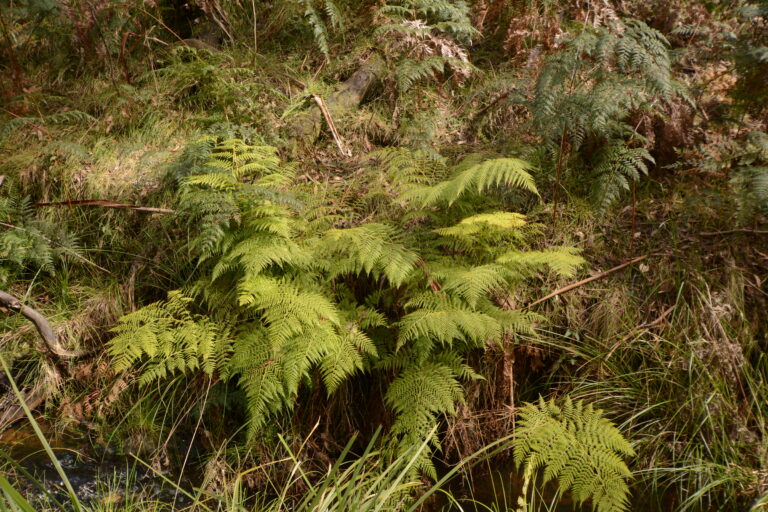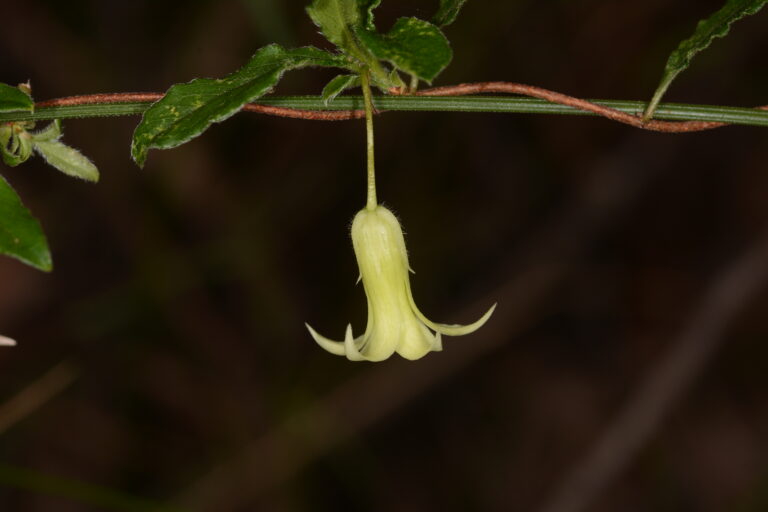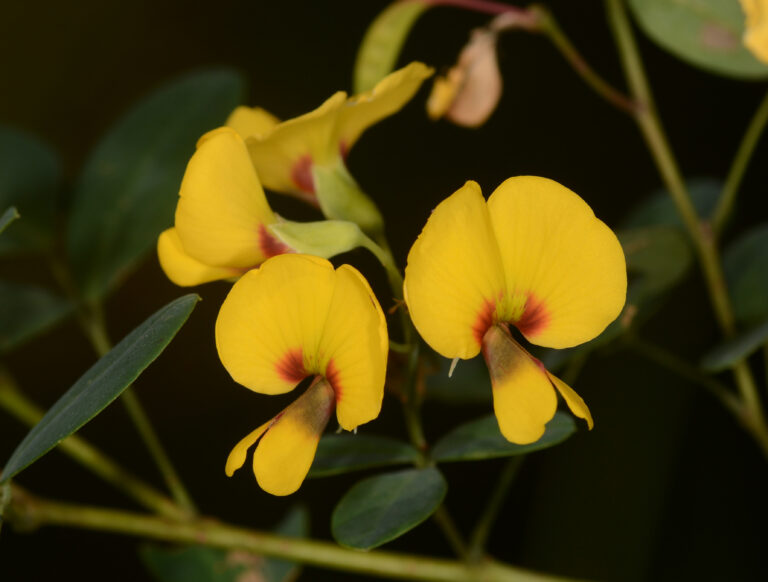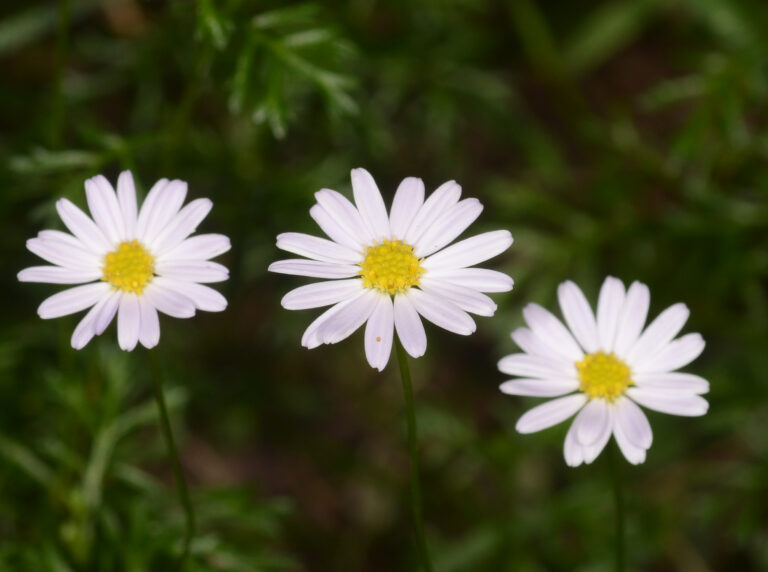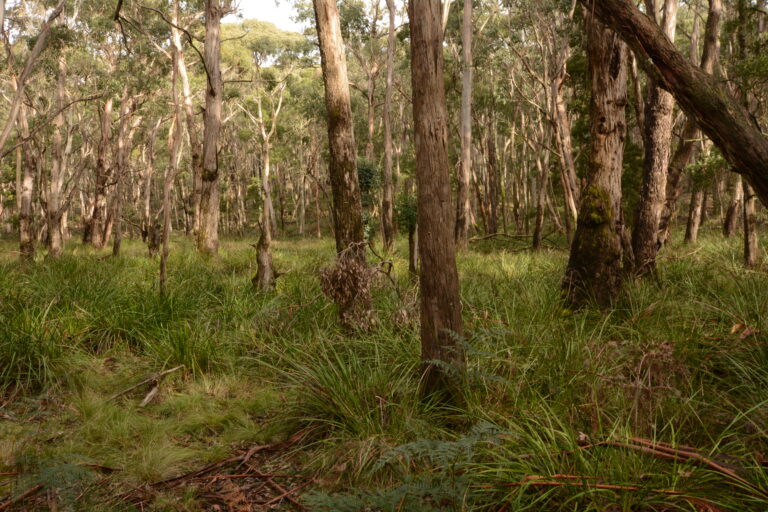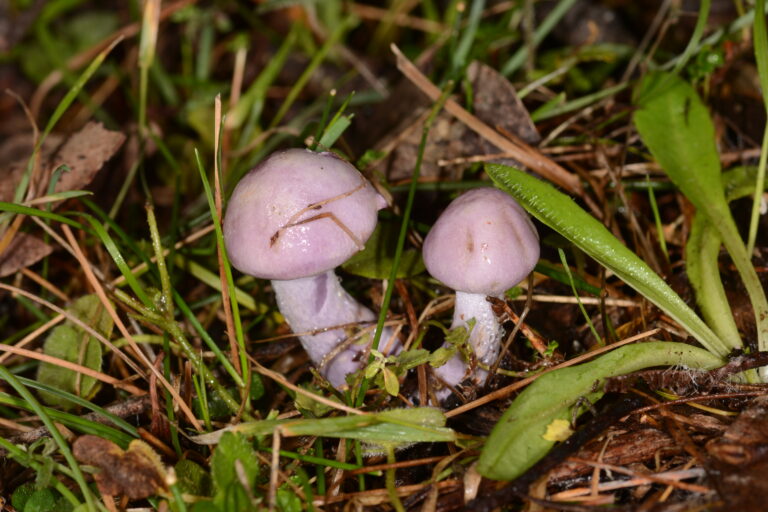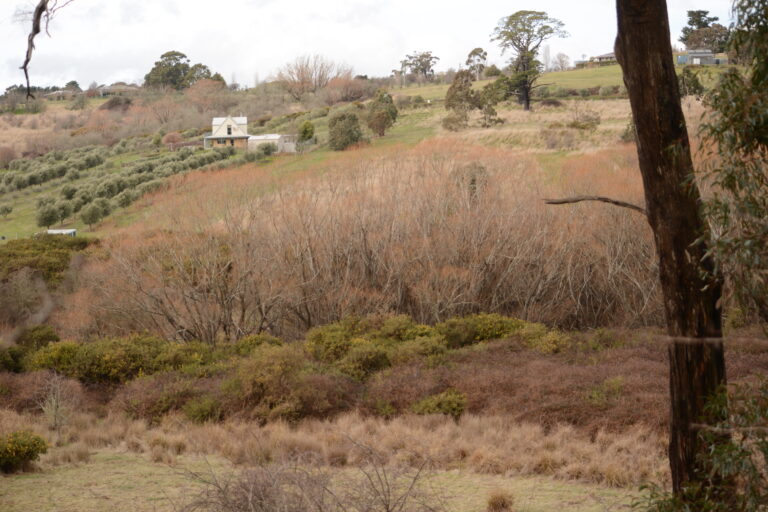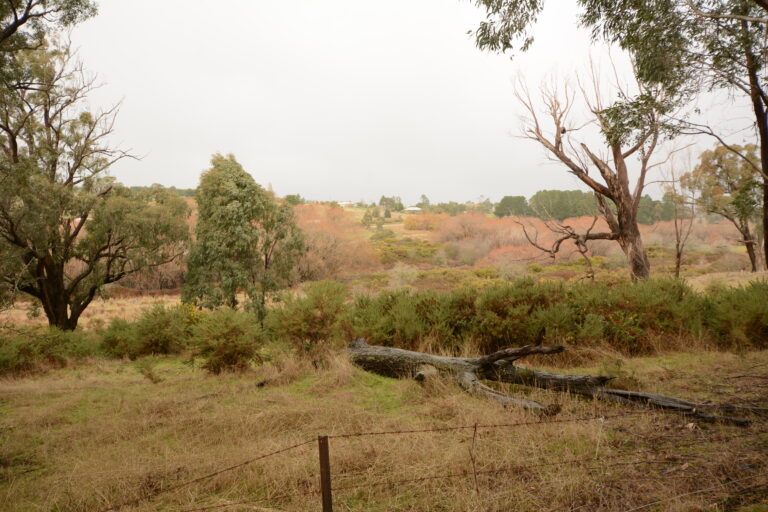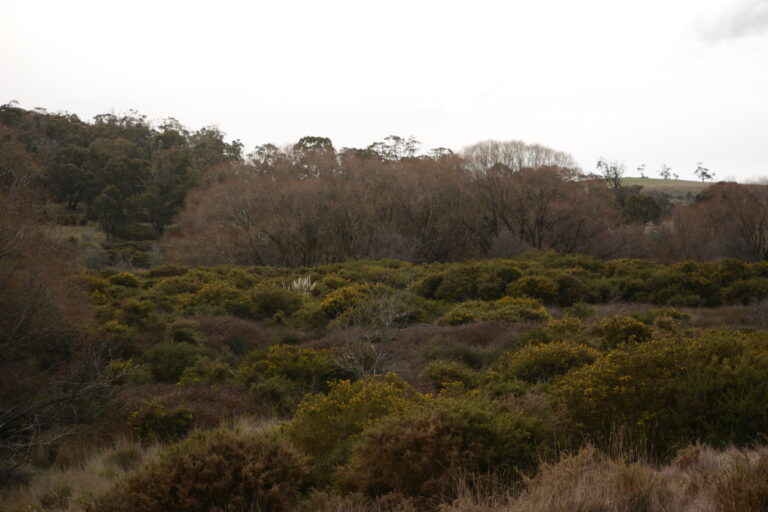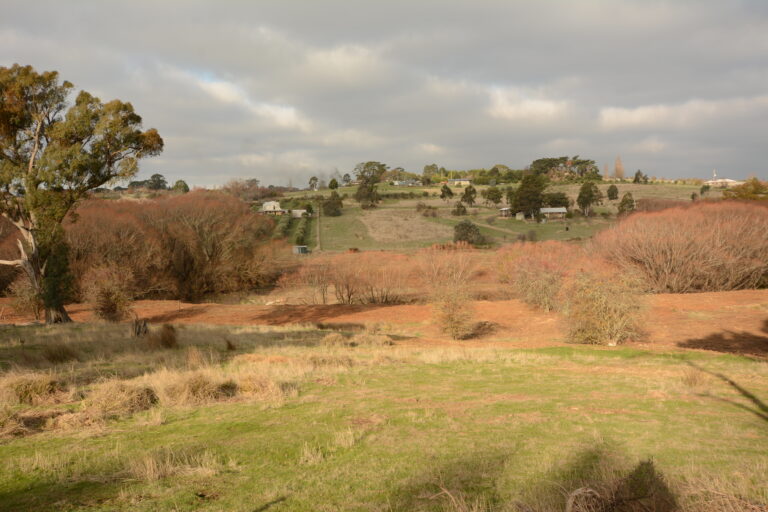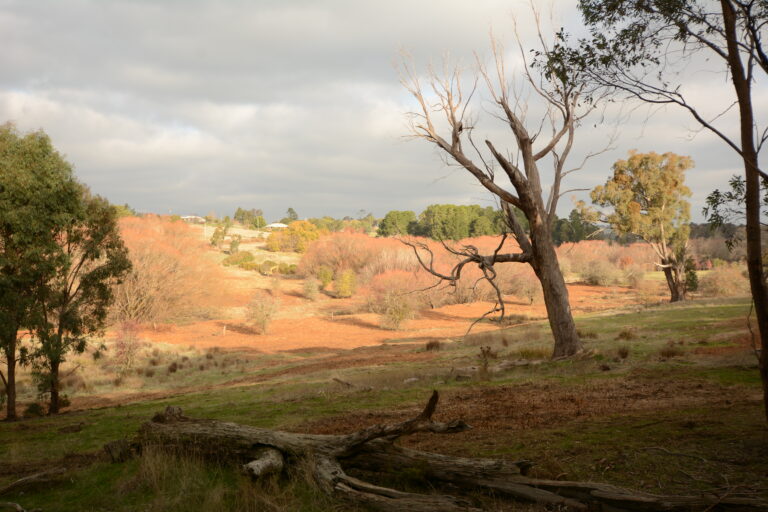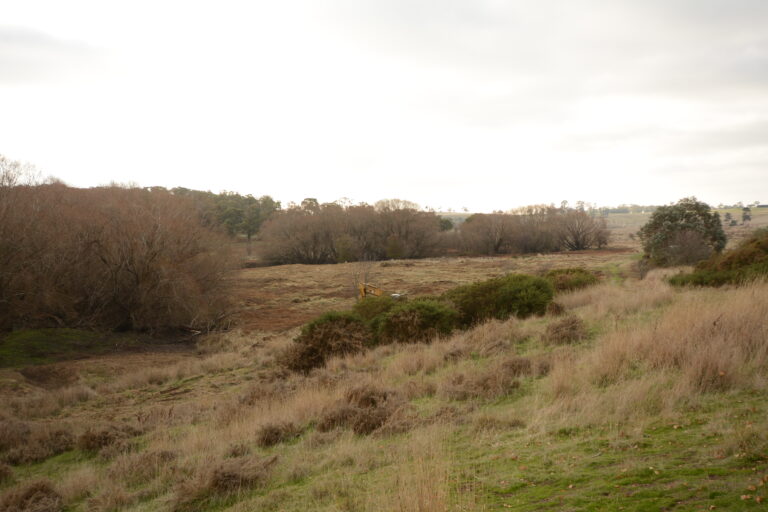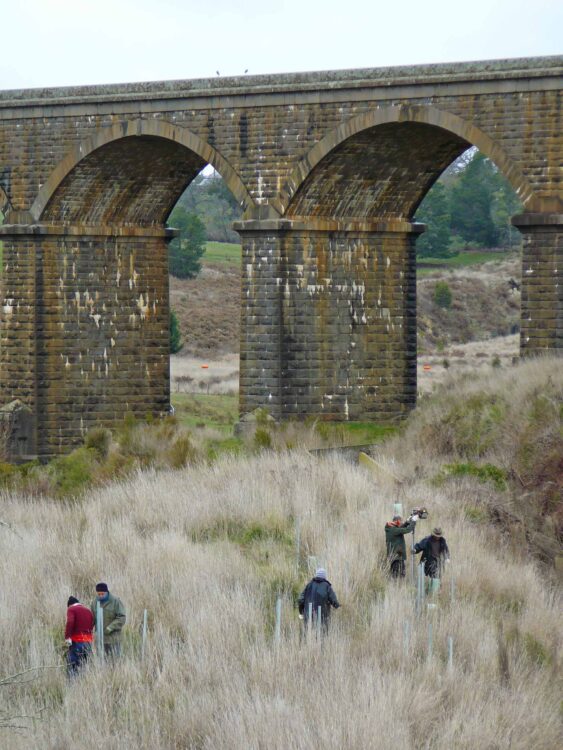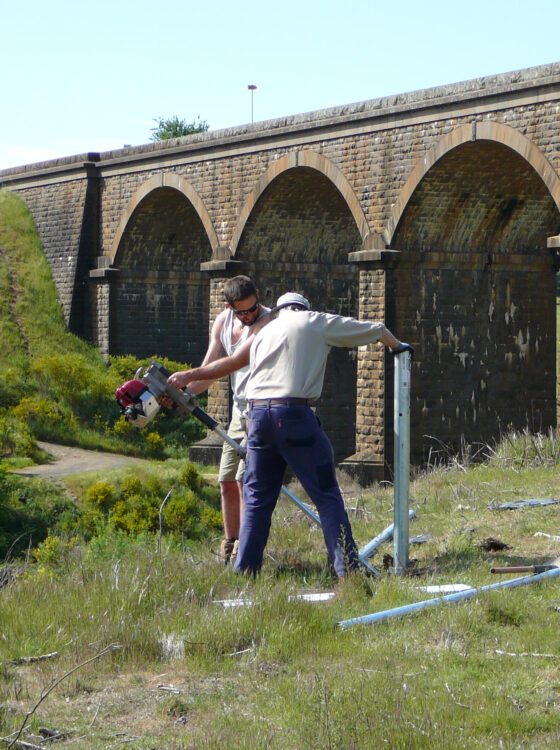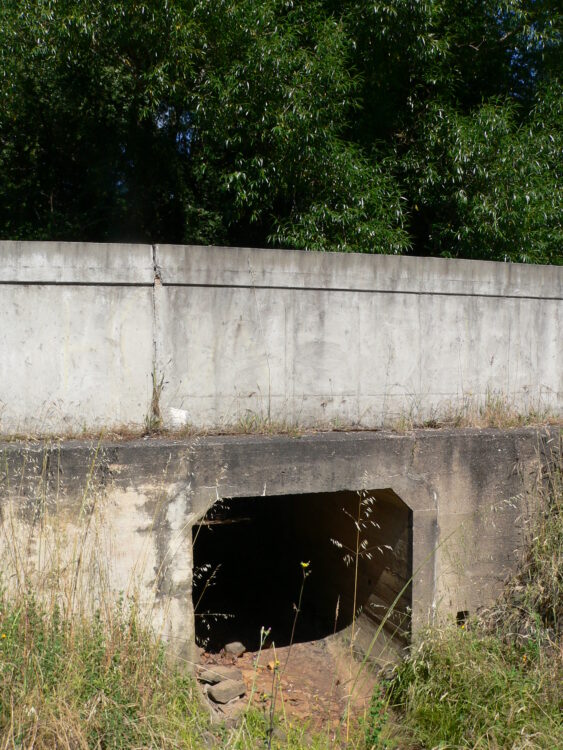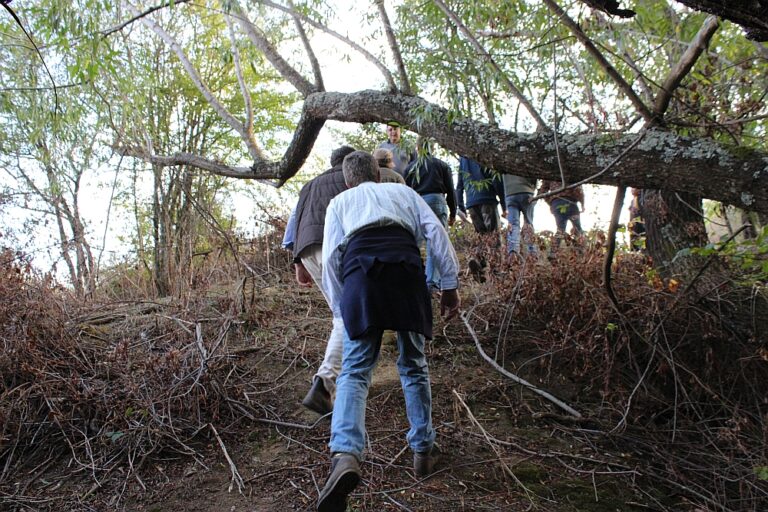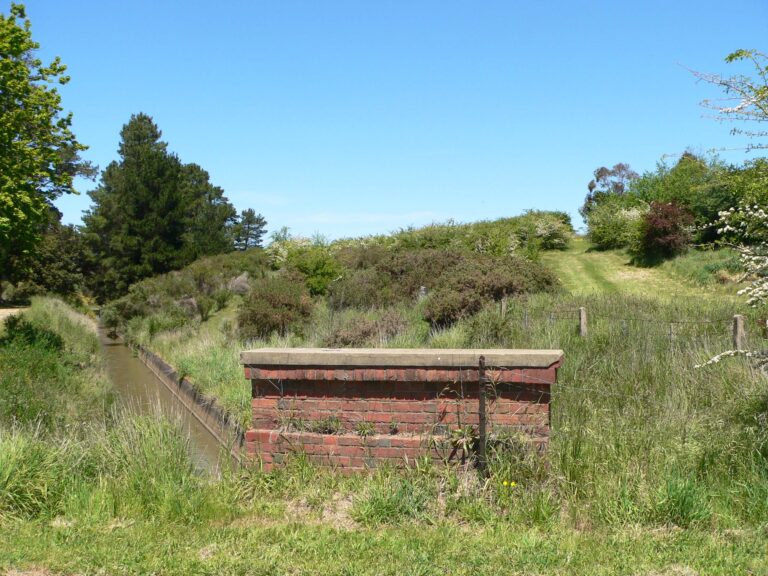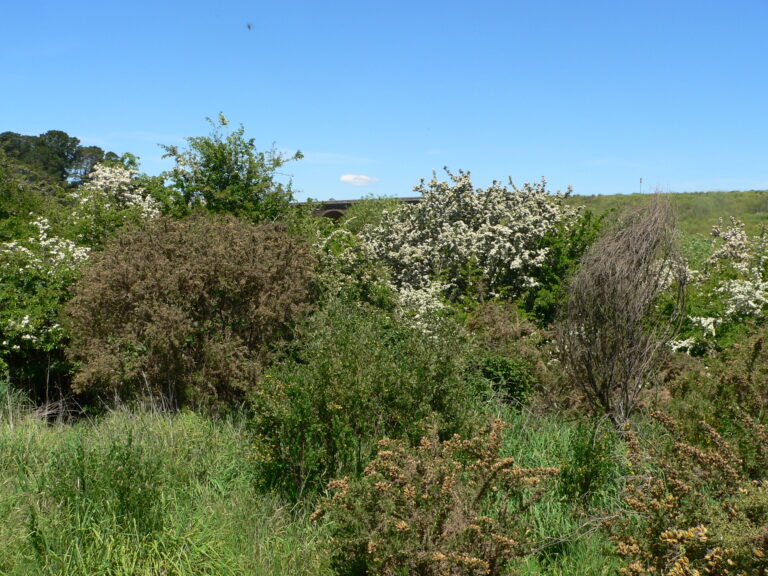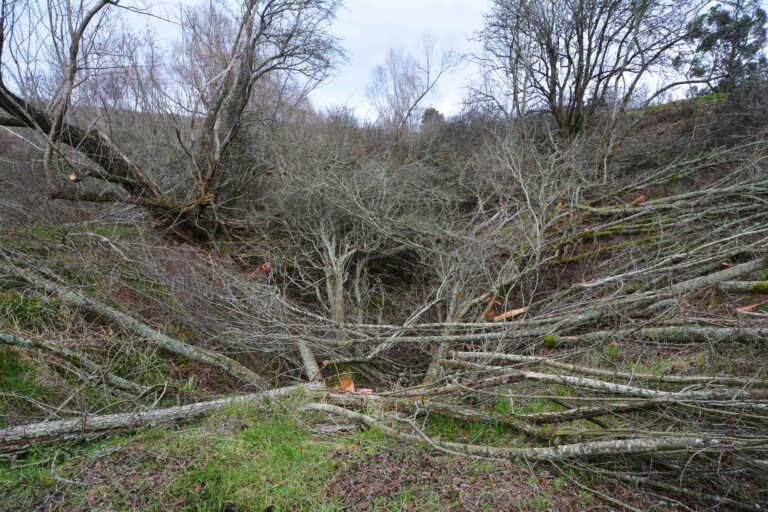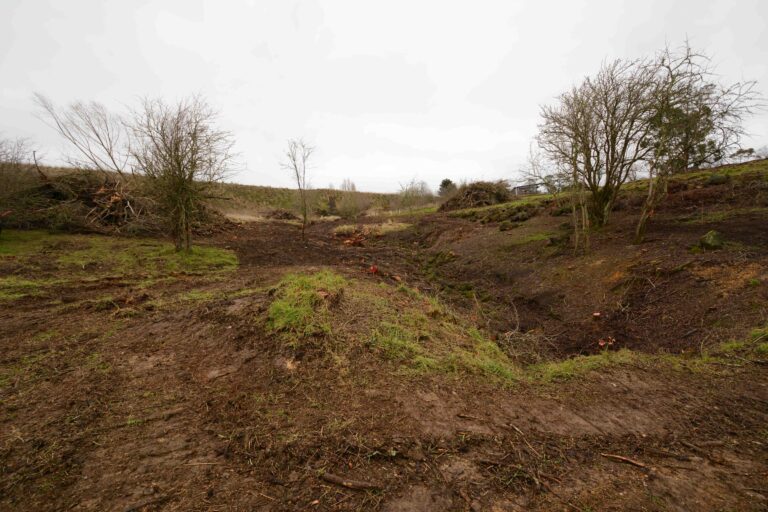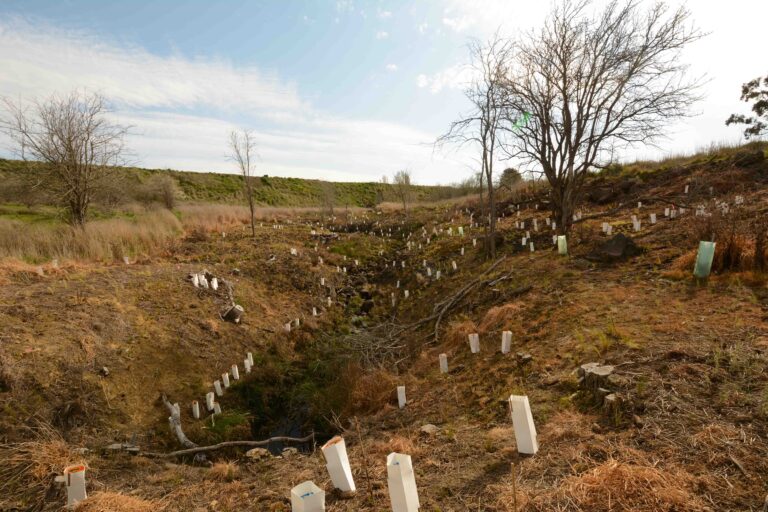This is Malmsbury Landcare’s largest project to date. The initial works were completed in two stages, with stage one starting south of the Chinaman Track crossing of Kangaroo Creek and following the creek through to the Springhill Road. Stage two included follow up work to stage one and extending the project area north of the Springhill Road to the end of the Wombat State Forest. Please look to our Kangaroo Creek – Denver Project for further details work undertaken in stage two.
When North Central Catchment Management Authority (NCCMA) announced their Upper Coliban Project Landcare Grants program in 2017, the long-held dream of dealing with the 8.5 hectare patch of Gorse that straddled the Kangaroo Creek immediately to the south of Chinaman Track became a reality. We also proposed to treat all Gorse on both creek banks downstream to the Springhill Road, a distance of approximately 3.5 kilometres. Part of our in kind contribution was to conduct flora surveys of the Kangaroo Creek to its origin at Little Hampton (6 kilometres upstream from Chinaman Tk) and all the streams feeding in above the Springhill Road. This included Doctor’s Creek, Mudlark Creek, Whitehorse Creek, Buckley Creek and O’Learys Creek.
